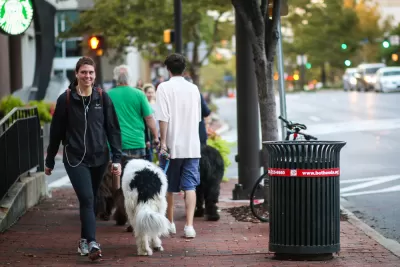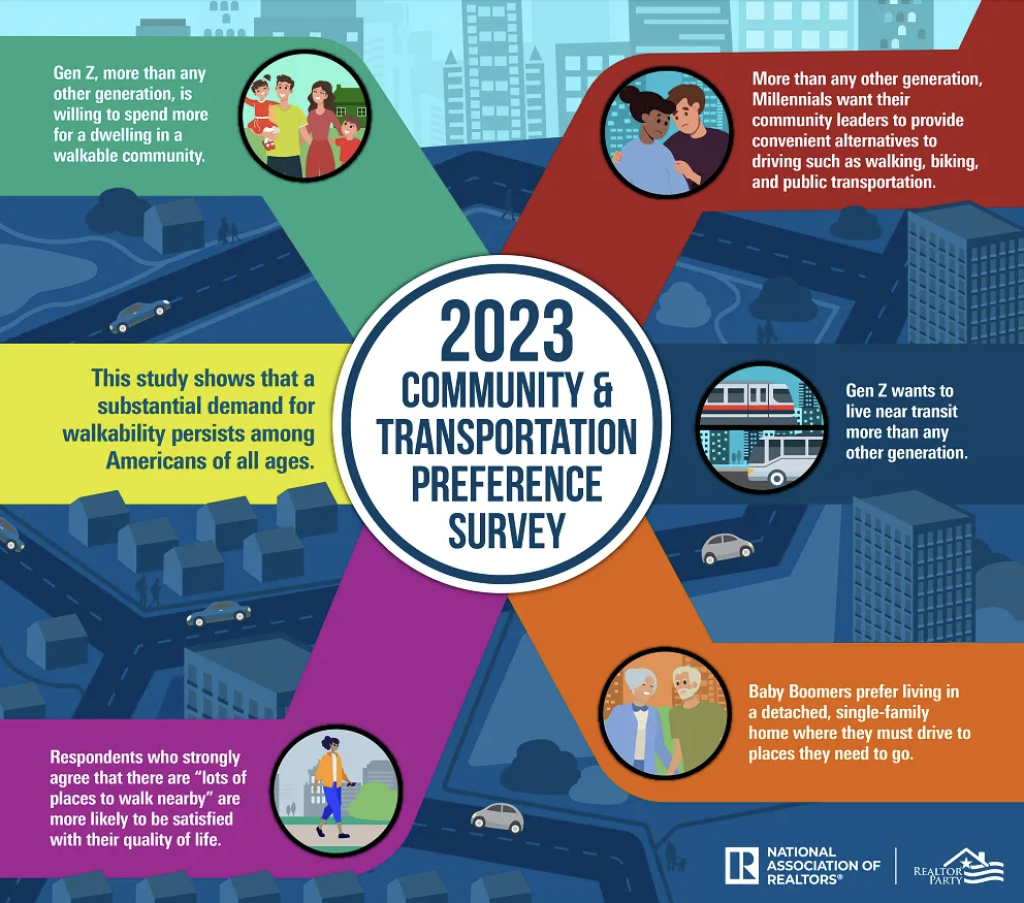Generation Z is leading a new push toward walkable communities, according to a recent survey by the National Association of Realtors.

American homebuyers have a strong preference for homes in walkable neighborhoods, according to the National Association of Realtors’ (NAR) recently published “2023 Community and Transportation Preferences Survey.”
“Seventy-nine percent of respondents rate walkability as “very” or “somewhat” important, and 78% say they’d pay more for a home in a walkable community, the survey shows,” according to an article by Realtor Magazine that shares details about the survey’s findings. “Young adults prioritize walkability the most, with 90% of Gen Z and millennial respondents indicating they’d pay more for a home in a walkable community; a third say they’d ‘pay a lot more.’”
The survey also debunks a common narrative that the pandemic revealed a preference for the automobile dependent neighborhoods of sprawl. “Walkability became more of a focus during the COVID-19 pandemic, but demand has only grown since,” according to the article. Still, despite those reported preferences, domestic migration trends show population declining in many of the country’s more urban areas, with more people arriving on the outskirts of metropolitan areas.
More details about the survey and its findings are available at the NAR website.

FULL STORY: Survey: Buyers May Pay More to Live in Walkable Communities

Planetizen Federal Action Tracker
A weekly monitor of how Trump’s orders and actions are impacting planners and planning in America.

Restaurant Patios Were a Pandemic Win — Why Were They so Hard to Keep?
Social distancing requirements and changes in travel patterns prompted cities to pilot new uses for street and sidewalk space. Then it got complicated.

Map: Where Senate Republicans Want to Sell Your Public Lands
For public land advocates, the Senate Republicans’ proposal to sell millions of acres of public land in the West is “the biggest fight of their careers.”

Maui's Vacation Rental Debate Turns Ugly
Verbal attacks, misinformation campaigns and fistfights plague a high-stakes debate to convert thousands of vacation rentals into long-term housing.

San Francisco Suspends Traffic Calming Amidst Record Deaths
Citing “a challenging fiscal landscape,” the city will cease the program on the heels of 42 traffic deaths, including 24 pedestrians.

California Homeless Arrests, Citations Spike After Ruling
An investigation reveals that anti-homeless actions increased up to 500% after Grants Pass v. Johnson — even in cities claiming no policy change.
Urban Design for Planners 1: Software Tools
This six-course series explores essential urban design concepts using open source software and equips planners with the tools they need to participate fully in the urban design process.
Planning for Universal Design
Learn the tools for implementing Universal Design in planning regulations.
Heyer Gruel & Associates PA
JM Goldson LLC
Custer County Colorado
City of Camden Redevelopment Agency
City of Astoria
Transportation Research & Education Center (TREC) at Portland State University
Camden Redevelopment Agency
City of Claremont
Municipality of Princeton (NJ)





























